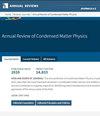内耳感受毛细胞、受体和放大器的机械频率调节
IF 30.7
1区 物理与天体物理
Q1 PHYSICS, CONDENSED MATTER
Annual Review of Condensed Matter Physics
Pub Date : 2021-03-10
DOI:10.1146/annurev-conmatphys-061020-053041
引用次数: 8
摘要
我们通过分析声音的频率内容来识别声音。不同的频率成分唤起不同的机械波,每一种机械波在听觉器官或耳蜗内传播到特定频率的地方。这些信号被毛细胞探测到,毛细胞是耳朵的感觉感受器,它对被称为毛束的机械敏感天线的振动做出反应。主动过程通过包括主动毛束运动在内的多种机制,增强毛细胞的灵敏度、锐化频率调谐、拓宽毛细胞的动态范围。由离子通道的门控力介导的负刚度和由肌球蛋白马达和钙离子通道重合闸引起的延迟力反馈之间的动态相互作用使毛束接近振荡不稳定性-霍普夫分岔。Hopf分岔附近的操作提供了听觉特征的非线性一般特征。分子、细胞和超细胞尺度上的多重梯度将毛细胞调谐到覆盖我们听觉范围的特征频率。本文章由计算机程序翻译,如有差异,请以英文原文为准。
Mechanical Frequency Tuning by Sensory Hair Cells, the Receptors and Amplifiers of the Inner Ear
We recognize sounds by analyzing their frequency content. Different frequency components evoke distinct mechanical waves that each travel within the hearing organ, or cochlea, to a frequency-specific place. These signals are detected by hair cells, the ear's sensory receptors, in response to vibrations of mechanically sensitive antennas termed hair bundles. An active process enhances the sensitivity, sharpens the frequency tuning, and broadens the dynamic range of hair cells through several mechanisms, including active hair-bundle motility. A dynamic interplay between negative stiffness mediated by ion channels’ gating forces and delayed force feedback owing to myosin motors and channel reclosure by calcium ions brings the hair bundle to the vicinity of an oscillatory instability—a Hopf bifurcation. Operation near a Hopf bifurcation provides nonlinear generic features that are characteristic of hearing. Multiple gradients at molecular, cellular, and supercellular scales tune hair cells to characteristic frequencies that cover our auditory range.
求助全文
通过发布文献求助,成功后即可免费获取论文全文。
去求助
来源期刊

Annual Review of Condensed Matter Physics
PHYSICS, CONDENSED MATTER-
CiteScore
47.40
自引率
0.90%
发文量
27
期刊介绍:
Since its inception in 2010, the Annual Review of Condensed Matter Physics has been chronicling significant advancements in the field and its related subjects. By highlighting recent developments and offering critical evaluations, the journal actively contributes to the ongoing discourse in condensed matter physics. The latest volume of the journal has transitioned from gated access to open access, facilitated by Annual Reviews' Subscribe to Open initiative. Under this program, all articles are now published under a CC BY license, ensuring broader accessibility and dissemination of knowledge.
 求助内容:
求助内容: 应助结果提醒方式:
应助结果提醒方式:


